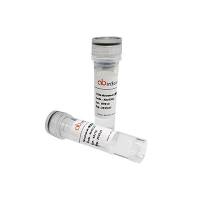Structural data on biological macromolecules provide invaluable insights into the interactions of proteins with nucleic acids. Data obtained at atomic resolution by X-ray diffraction or nuclear magnetic resonance (NMR) studies ultimately describes the exact folding of polypeptide chains and the contacts between proteins and DNA. However, many complexes are difficult to analyze at atomic resolution because either they are too large or too difficult to crystallize in three dimensions (3-D). Recent progress in electron microscopy, specimen preservation, and image processing provides the possibility to calculate detailed molecular envelopes that are complementary to X-ray crystallography with little theoretical limit on specimen size. In the case of membrane proteins organized into one-molecule-thick two-dimensional (2-D) arrays, atomic models could be elaborated from electron microscopy data (1 ,2 ). It is beyond the scope of this chapter to describe in detail the electron crystallographic methods and computer image analysis required to calculate a 3-D model of a crystallized protein complex; these aspects are described elsewhere (3 ). Here, we will focus on the formation of 2-D crystals of soluble proteins, an essential preliminary step in high-resolution structure determination by electron microscopy and provide the necessary information to set up, screen, and evaluate crystallization experiments.






